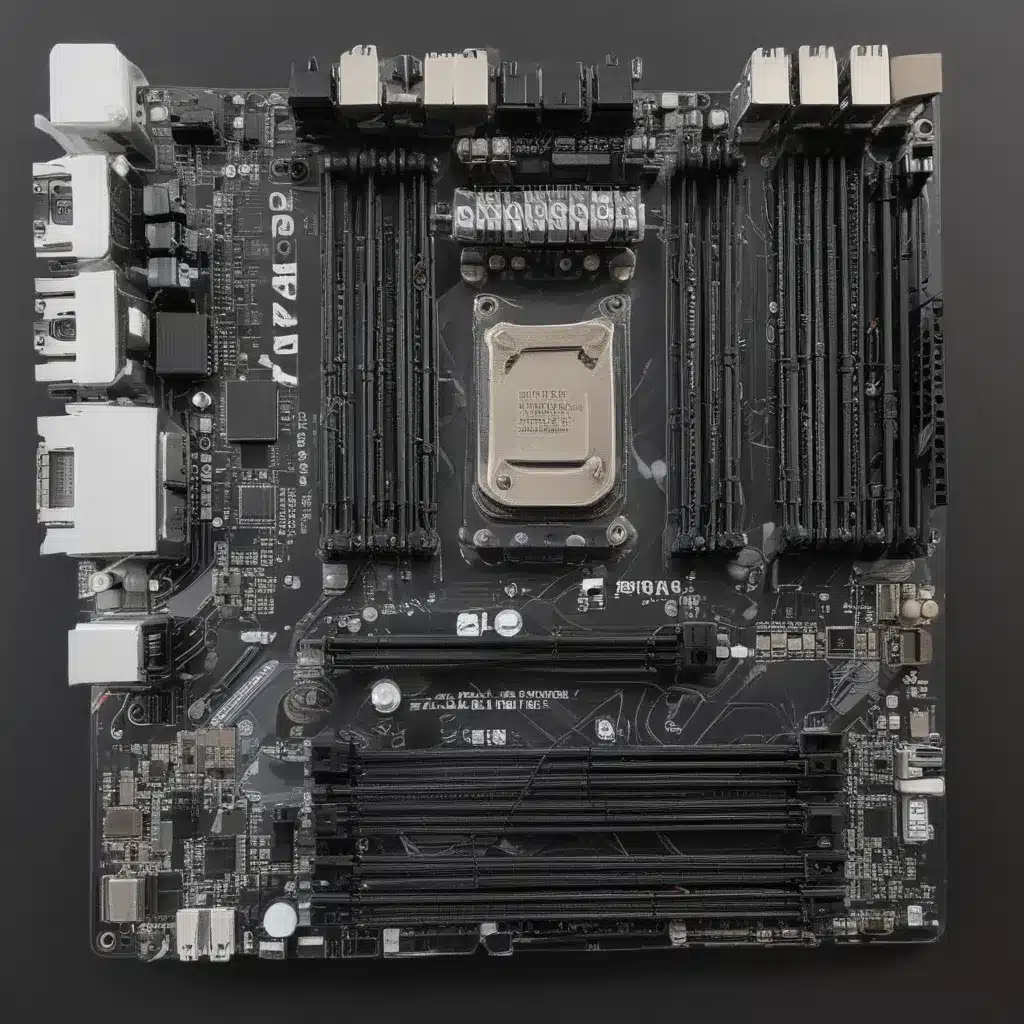Unleash the Power of Zen 4: Exploring the X670 Motherboard Lineup
As an avid PC enthusiast and self-proclaimed tech geek, I’ve been eagerly anticipating the release of AMD’s latest Ryzen 7000 series processors, based on the highly-anticipated Zen 4 architecture. And now, with the arrival of the new X670 motherboards, the pieces are starting to fall into place for building the ultimate gaming and productivity powerhouse.
Let me take you on a journey through the world of X670 motherboards and how they can help you unlock the full potential of Zen 4. Whether you’re a seasoned PC builder or a newcomer to the game, I’ve got the inside scoop on what to look for and how to make the most of these cutting-edge components.
The X670 Advantage: Unlocking Zen 4’s True Potential
One of the key features that sets the X670 motherboards apart is their support for the latest PCIe 5.0 standard. [6] This means that your graphics card and high-speed NVMe SSDs can take full advantage of the blazing-fast data transfer speeds, giving you an edge in the most demanding games and content creation workflows.
But it’s not just the raw performance that has me excited. The X670 chipset also brings some impressive overclocking capabilities to the table. With support for AMD’s EXPO (Extended Profiles for Overclocking) technology, [6] you’ll be able to push your system’s DDR5 memory to new heights, unlocking even more performance headroom.
And let’s not forget about the sheer number of PCIe lanes available on these motherboards. With up to 44 lanes, [6] you can kit out your rig with all the high-speed storage, networking, and expansion options your heart desires. It’s like having a superhighway for your data to zip along.
Navigating the X670 Lineup: Choosing the Right Board for You
Now, I know what you’re thinking: “With all these features, the X670 motherboards must be astronomically expensive, right?” Well, fear not, my fellow PC builders, because AMD has you covered.
The X670 lineup offers a range of options to suit different budgets and needs. [6] At the top-end, you’ve got the X670E (Enthusiast) boards, which pull out all the stops with features like dual-channel DDR5 memory, PCIe 5.0 for both graphics and storage, and robust power delivery systems. These are the cream of the crop for hardcore gamers and content creators.
But if you’re looking to save a few bucks without sacrificing too much performance, the standard X670 boards might be just what you need. You still get the core benefits of the new platform, like PCIe 5.0 and DDR5 memory support, but with a more streamlined feature set.
And let’s not forget about the more budget-friendly B650 and B650E options. [6] These boards still pack a punch, with support for the latest Ryzen 7000 CPUs and many of the same high-end capabilities as their X670 siblings. It’s all about finding the right balance between your needs and your wallet.
Making the Most of Zen 4: Memory and Overclocking Considerations
Now, as exciting as all these new motherboard features are, we can’t forget about the importance of memory performance when it comes to Zen 4. [2] After all, these CPUs are designed to sing with the latest DDR5 memory technology.
AMD has been pretty clear about their recommended “sweet spot” for Ryzen 7000 memory, [3] and it’s DDR5-6000. Now, I know what you’re thinking: “But wait, didn’t AMD say the max native speed is DDR5-5200?” Well, yes, that’s true, but the key word here is “native.” [3] With the help of AMD’s EXPO overclocking tech, [6] you’ll be able to push those memory speeds even higher, unlocking incredible performance gains.
Of course, memory overclocking can be a bit of a delicate dance, and that’s where the X670 boards really shine. With their robust power delivery systems and advanced overclocking utilities, you’ll have all the tools you need to find that perfect balance of speed, stability, and system harmony. [6]
Avoiding the Pitfalls: A Word of Caution on ASUS Motherboards
Now, before I wrap things up, I feel the need to address a bit of a cautionary tale when it comes to X670 and B650 motherboards. It seems that our friends at ASUS have been having a bit of trouble with memory stability on some of their latest offerings. [8]
Now, I know ASUS is usually a go-to brand for PC enthusiasts, but in this case, it seems they may have dropped the ball a bit. Reports have been coming in of random crashes, driver issues, and even failed memory tests on ASUS boards. [8] The common thread appears to be something funky going on with the memory controllers.
Now, I’m not saying you should swear off ASUS entirely, but if you’re planning on building a Ryzen 7000 system, you might want to consider alternative motherboard options from the likes of MSI, Gigabyte, or ASRock. [8] At least until ASUS can get their act together and iron out those memory stability kinks.
Embrace the Future: Building Your Zen 4 Powerhouse
So there you have it, folks – the lowdown on X670 motherboards and how they can help you unleash the true potential of AMD’s Ryzen 7000 series processors. Whether you’re a hardcore gamer, a content creation maven, or just someone looking to future-proof their rig, these boards have a lot to offer.
Just remember to do your research, weigh your options, and above all, have fun with the process. After all, building a PC is as much an art as it is a science, and with the right components, you can create a true masterpiece. Happy building, and may your framerates be high and your load times be low!













